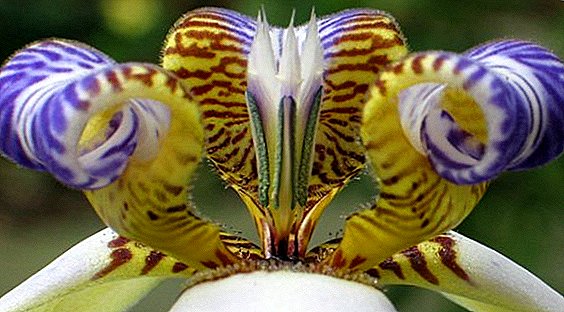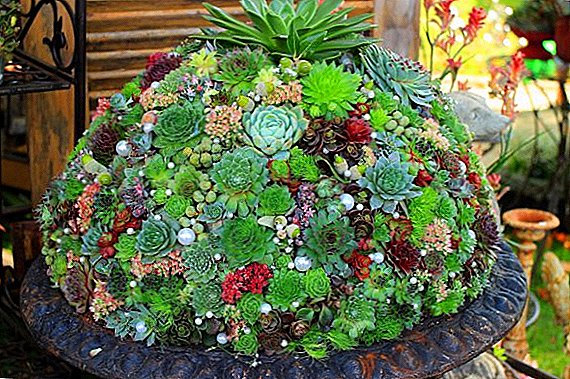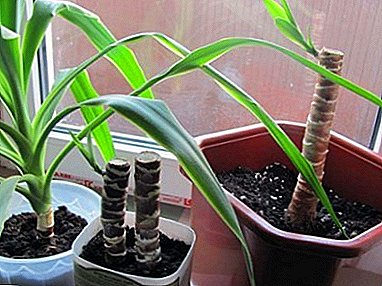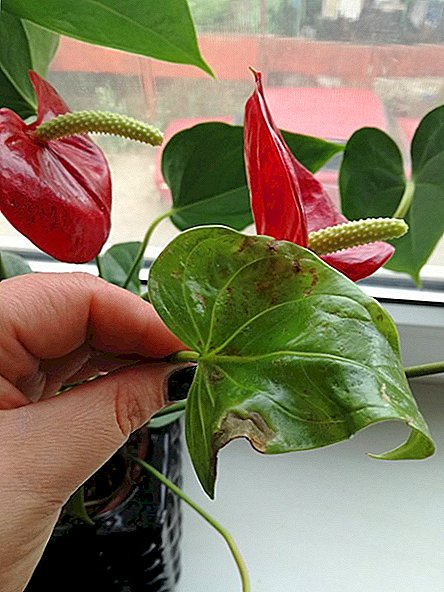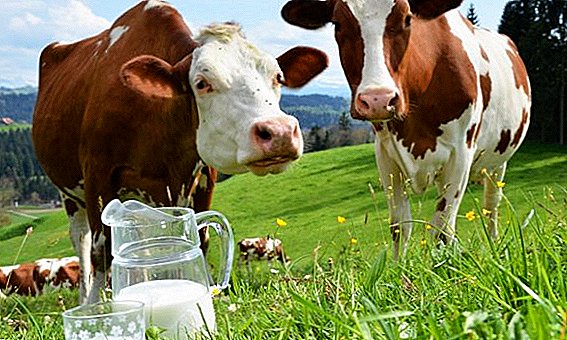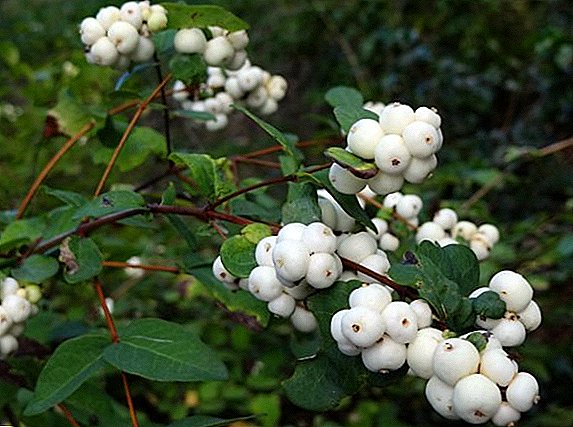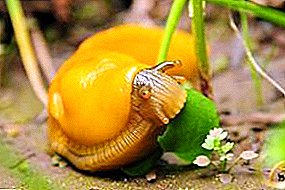 Cultivation of ostriches is a non-standard, but profitable type of poultry farming. Today, this trend is gaining popularity, but the success of the venture depends on a number of factors, including the breed of bird, since not all of them are suitable for home breeding.
Cultivation of ostriches is a non-standard, but profitable type of poultry farming. Today, this trend is gaining popularity, but the success of the venture depends on a number of factors, including the breed of bird, since not all of them are suitable for home breeding.
What types of ostriches are best suited for this purpose will be discussed further.
Ostrich Breeds
Ostrich is the largest bird in the world, on average, its height reaches 2-2.5 m, and weight - 150 kg. He has a long neck without feathers, his body is covered with large curly feathers, he does not know how to fly, but he runs remarkably, developing a speed of over 50 km / h. Color may be different in individuals of different breeds. Homeland and the main habitat of birds are Africa and Australia. In our latitudes, there are ostrich farms on which the main agricultural breeds are bred.
Did you know? Ostriches can stand up for themselves and their offspring, thanks to powerful legs. The male has a huge impact force: he is able to bend iron reinforcement with a diameter of 1.5 cm, just kicking her.
African Ostriches
African ostrich - the largest representative of these birds, lives in a dry hot climate, mainly on sandy soils, eats mainly vegetation. The breed is represented by four species, each of which has its own characteristics.
Black
This variety is characterized by high growth, often up to 270 cm, and an impressive weight of 150-160 kg, birds are the largest representatives of the breed, have a dense build. Such individuals are unpretentious to the conditions of detention, calmly withstand temperatures from +35 to -20 ° C, which makes possible their breeding in almost any climatic conditions.  Black birds of this variety are called due to the corresponding plumage color in males, females also have a dark color, but closer to a brown shade. Black ostrich usually lives 70-75 years, while maintaining its productivity up to 35 years of age. Individuals reach sexual maturity, on average, by 3 years of age.
Black birds of this variety are called due to the corresponding plumage color in males, females also have a dark color, but closer to a brown shade. Black ostrich usually lives 70-75 years, while maintaining its productivity up to 35 years of age. Individuals reach sexual maturity, on average, by 3 years of age.
The egg production of the breed is 50-80 eggs per season from one female. Ostrich eggs are very large compared to specimens of other birds: their diameter is about 15-20 cm, weight - 1.5-2 kg.
Did you know? Scrambled eggs of the same size as 25 chicken eggs can be made from one ostrich egg.
Namibian
This subspecies is similar in appearance to black ostriches, however, it has smaller sizes: the average height of an individual is about 2 m, its weight is up to 70 kg, while males are often smaller than females. A special feature of the color is the blue neck, the plumage is rare. Savannas are the favorite habitat for the breed, with the exception of especially arid areas. At the same time, birds are able to tolerate heat up to +50 ° С, independently regulating heat transfer.
Savannas are the favorite habitat for the breed, with the exception of especially arid areas. At the same time, birds are able to tolerate heat up to +50 ° С, independently regulating heat transfer.
Average egg production is about 40-45 eggs per season weighing 1.1-1.5 kg.
Zimbabwean
Such a bird is not inferior in size to its black brother: height - about 2-2.5 m, male weight - 150 kg, females - 120 kg. This type of blue skin on the neck, and the legs and beak of a dark gray shade.
It is interesting to know what ostriches eat in the wild and at home.
As a bright representative of the African breed, the Zimbabwean variety has good egg production: 40-50 pieces per season, while giving very large specimens of 1.5-2.1 kg in weight.
Masai
This breed is only half domesticated, because the bird gets along poorly with humans. She lives in East Africa. According to external characteristics, this type is similar to the classic representative of the African breed, however, the scalp, neck and legs have a pink-red tint.  Masay ostriches have very low productivity and in poultry farming they are used only for crossing in order to get more productive and flexible animals.
Masay ostriches have very low productivity and in poultry farming they are used only for crossing in order to get more productive and flexible animals.
Important! If the goal of breeding is to obtain a large amount of high-quality meat, the best option for crossing is the female of the black African ostrich and the male of Zimbabwe.
Emu
According to its characteristics, the Australian species can be attributed to both ostrich-shaped and cassowary. This is a large bird, rising to 170 cm and weighing about 55 kg. Unlike ordinary ostriches, it has three-toed paws and does not have a bladder. The plumage is hairy, more like wool, the color of the cover varies from gray to dark brown with brown splashes. It is noteworthy that the males and females of this breed are almost indistinguishable in appearance.  Emu egg production is average, for one laying the female brings 7-8 eggs of dark blue color, 700-800 g each, which are then hatched by the male for 55-60 days. In terms of performance, it is effective to dilute emu for meat, which has a very low level of fat (about 1.5%) and is dietary.
Emu egg production is average, for one laying the female brings 7-8 eggs of dark blue color, 700-800 g each, which are then hatched by the male for 55-60 days. In terms of performance, it is effective to dilute emu for meat, which has a very low level of fat (about 1.5%) and is dietary.
Breeding ostriches should start with the incubation of ostrich eggs, because getting healthy offspring by incubation is very difficult.
Nandu
The American species of ostrich, the smallest member of the family: its height, on average, is no more than 1.5 m, and its weight rarely exceeds 40 kg. Dwells in South America, Chile, Brazil. Externally, the Nandu resemble African fellows in the structure and character of the plumage, but their distinguishing feature is the absence of feathers on the neck and head, and the color of the feather cover has a uniform light gray color.  Despite its relatively small size, this breed has a good egg production rate: up to 18-20 eggs per laying, weighing 1.2-1.3 kg, with a diameter of up to 15 cm.
Despite its relatively small size, this breed has a good egg production rate: up to 18-20 eggs per laying, weighing 1.2-1.3 kg, with a diameter of up to 15 cm.
Read more about the features of the American Ostrich Nanda.
What breed is best to breed
Breeding ostriches will be economically beneficial if you clearly define what goals you are pursuing: getting eggs, meat or non-waste production. In addition, it is important to remember that birds of different breeds have different temperaments and requirements for conditions of detention. What breed is most suitable for home breeding? Consider several options:
- If the goal of breeding poultry is to get meat, then the emu is best suited for its characteristics: they are rather large, in addition, their meat has a high dietary value.
- In the case when the purpose of keeping ostriches is to get eggs, it is worth looking at the Nanda breed. These birds are not too whimsical, small, but able to provide regular and abundant egg laying.
- The undoubted favorite farmers consider the African ostrich. This breed not only has high productivity, but also versatility: not only eggs and meat are used for various purposes, but also poultry skin, feathers and fat. In addition, representatives of this breed live very long and have a docile nature, which is important when the content on the farm.

Important! Of all the varieties of the African breed, the Masai ostrich is the most aggressive, so it is not recommended to take it for breeding, except when crossed with other species to obtain improved performance indicators.
Peculiarities of keeping ostriches at home
At first glance, it may seem that the breeding of ostriches is a complex process, but in practice it differs little from any other type of poultry farming, however, it is necessary to take into account the basic requirements for housing conditions.
Ostriches traditionally contain one of three schemes:
- Intensive - involves the cultivation of ostriches in a limited area under the constant supervision of farm workers.
- Extensive - birds are given complete freedom in a large but limited area.
- Semi-intensive - combines the first two schemes and involves walking the birds in a large space, but under the control of man.
 Most often used semi-intensive scheme, because it is most convenient for the owner and familiar to the birds.
Most often used semi-intensive scheme, because it is most convenient for the owner and familiar to the birds.
Find out what is useful ostrich fat for humans.
In this case, the basic conditions of detention must be respected.
- Ostriches organize a spacious house, at the rate of 10 square meters. m on one individual, the walls of the room are warmed, exclude drafts, but provide good ventilation;
- the premises of the house and the paddock must necessarily go to the south side, while the flock must have shelter on the ground where they can hide from the heat or precipitation;
- It is important that in the pens for ostriches grow greens, which they will eat, otherwise they will have to provide them with freshly mown grass;
- birds need regular and varied nutrition, including: grain, greens, vegetables, fruits, meat and bone meal, gravel, vitamin supplements during the laying period;
- there should be no garbage in the pen, which can be eaten by birds;
- It is imperative that preventive vaccination of a livestock under the supervision of a veterinarian be carried out for preventive purposes.
 So, consideration of the issue of breeding features of ostriches makes it possible to assess the feasibility of this type of activity and draw conclusions. An ostrich farm involves large investments at the initial stage; nevertheless, with proper and competent poultry housing, this can become a really very promising and profitable business.
So, consideration of the issue of breeding features of ostriches makes it possible to assess the feasibility of this type of activity and draw conclusions. An ostrich farm involves large investments at the initial stage; nevertheless, with proper and competent poultry housing, this can become a really very promising and profitable business.


